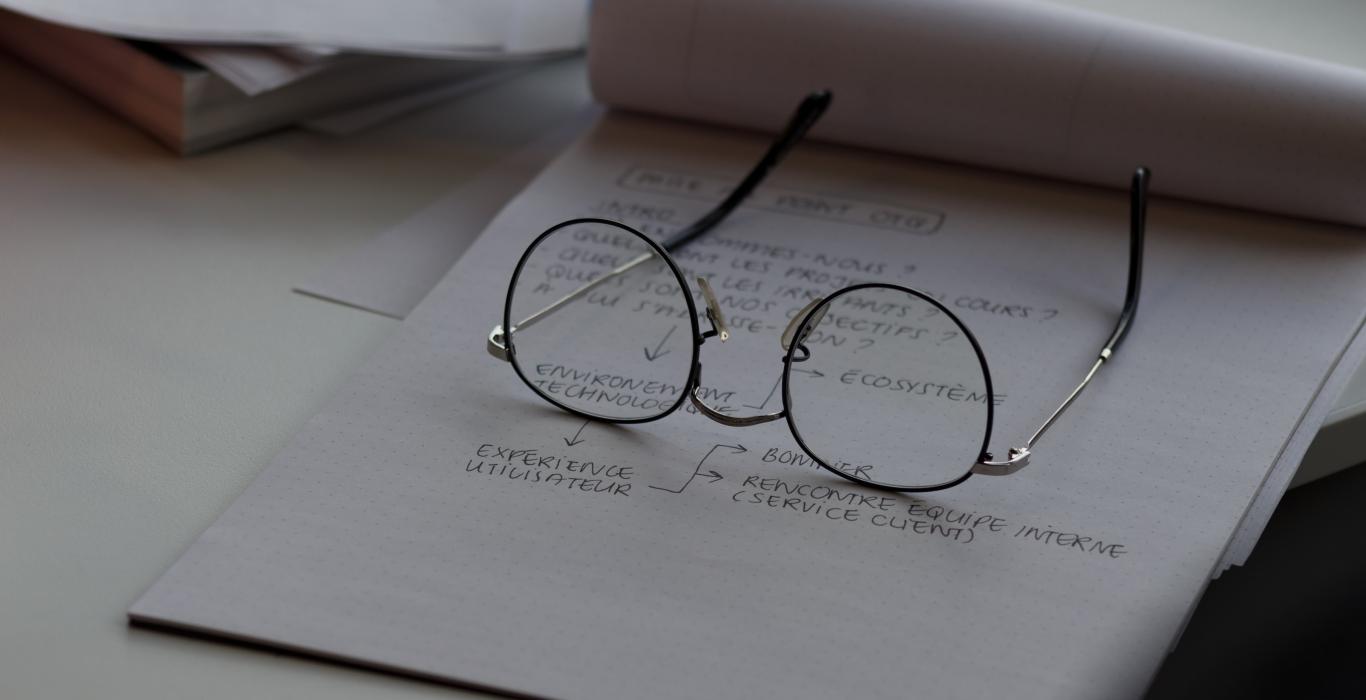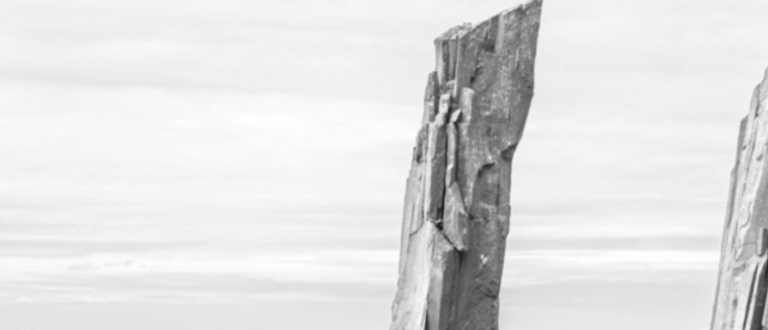“If somebody knocked at your door and asked you for $1,000, what questions are you going to ask this person?” — plus other considerations to make this grant writing season
Grant writing season is upon us, and for those writing one for the first time, the task can be daunting.
So we’ve enlisted the expertise of someone who has not only spent more than two decades of her career leading community and program development in the nonprofit world, but who also teaches workshops on grant writing itself.
Meet Stachen Frederick, Executive Director of Frontlines, a Toronto-based charity that serves children and youth in marginalized communities; and the founder of BrAIDS for AIDS, a nonprofit raising HIV and AIDS awareness in Black communities in Canada and around the world. Frederick teaches at Sheridan College and leads workshops and consultations on grant writing for nonprofit organizations and private corporations.
This interview has been edited for clarity and length.
Thank you for your time today, Stachen. Let’s start with a bit of your background: tell us about what you do and what drew you to nonprofit work?
 I wear a number of hats in the community: I am the head of a youth charity in Toronto, by the name of Frontlines, and I’m the founder of a nonprofit called BrAIDS for AIDS.
I wear a number of hats in the community: I am the head of a youth charity in Toronto, by the name of Frontlines, and I’m the founder of a nonprofit called BrAIDS for AIDS.
I'm also a professor—I teach grant writing and community development through fundraising, and I consult for a number of nonprofit organizations in the fundraising, grant writing, program development, and diversity and inclusion spaces. I've done some work with corporations as well around creating equitable practices, with a focus on helping communities.
You asked how I got into this line of work—you know, “helping” was something inherent in me at a young age. I've always had that innate desire to do work with children. At the beginning, I got a chemistry scholarship; I was going to do med school then specialize in child psychiatry.
But when I did a psychology elective, I realized I didn't want to do individual psychiatry. It was more holistic community health and community building that I wanted to do. And, more specifically, I realized there were needs in my community, particularly my Black community that needed funds. I think that's how the fundraising aspect came with my community development work—because you can't do community development if you don't have money.
Absolutely—and that’s where grant writing comes in. From your observation, what are some common misconceptions nonprofits have when it comes to grant writing?
There are different structures within the nonprofit sector: charities, who can get access to more corporate funding, for example, because of the ability to give tax receipts, and others, more volunteer-based, grassroots organizations, that don't have that same structure. One of the biggest misconceptions is when people do not understand the structure of their nonprofit and whether they can access the different types of funding.
And then you have what I want to highlight as the biggest misconception—which is that grant writing is difficult.
I've always tried to help others understand that grant writing is a human interaction. Yes, you're writing a document, but this reaches a person on the other side of the table.
What I do when I teach is ask: if somebody knocked at your door and asked you for $1,000, what questions are you going to ask this person?
Then think of that person—who is on the receiving end of your grant application—as the one asking those questions.
You're going to ask somebody who shows up at your door asking for $1,000: what do you need this for? That is a common question on grant applications. What's your vision? What's your mission? What are your activities? What's your relationship to the community?
Now, you could answer that question by specifying what your community needs, like “we need to have violence prevention programs or employment programs in the community because...” But also, what do you need the money for in terms of your budget? What is the breakdown?
So I like to dispel this myth that grant writing is difficult. There may be some ways around how you spice up your language, but having the basic elements down is one of the best things you can do as an organization or a grant writer.
I also hear people who want to hire a grant writer. But the grant writer is still going to expect that you have some knowledge; you are the one that's going to have a deeper sense of the needs of your community. Your grant writer can include statistics and whatnot, but you would have the language of your community members. You will still be expected to do work.
So it's not like you’re handing things over. That's another misconception—that organizations don't have to get involved in the grant writing process. But you absolutely do because you are the holder of that knowledge.
It’s good to get those myths busted before getting started. What preparation advice would you give grant writers as they head into grant season?
One of the things I tell people is to learn the common elements of a grant. If you have a project idea, put your project idea and your framework under those common elements. When grants come up, it'll be easy to copy and paste [certain common elements]. I have written a grant in one night because I already know what funders are going to ask.
There may be some questions around how to align specific elements with a funders’ grant, but again, funders are going to ask who you are, what your vision is, your mission, your activities. They're going to ask what you need the money for, the needs of your community. So it’s key to have some [reference] templates.
Another thing we're seeing in the sector is a large number of funders looking for diversity and social inclusion in grants. How are you involving and engaging your clients, your community in the grant writing process? Are they at the leadership table? It's important to ensure you can answer some of those questions funders are asking more of.
Also, think about all the aspects—or sectors or areas—that a project may fall under. For example, I could apply for a grant that's focused on food security. I can take the same project and apply for a youth sector grant—looking at building youth skills in the culinary field. Your proposal can have different areas that are potentially applicable for funding, so you want to have that list as well.
Funders will also ask you how your project is aligned with their interests and funding program.
When it comes to writing the grant itself, what considerations should grant writers keep in mind?
The narrative of your grant must fit the narrative of your budget, which must speak to the narrative of your work plan. You want to speak the same language consistently.
Show funders you’ve done your research, for example, with pricing. If you're saying you're buying a stove, include hyperlinks to stoves in the market.
One of the things I would say as well is that people don't think a lot about how they stand out.
When I think about BrAIDS for AIDS, for example, I could confidently say there's no organization in the world utilizing hair as a tool for HIV engagement. So when I have funders ask me why they should give me funding when there are other Black-led organizations doing HIV and AIDS work, we can say we have a totally different demographic because we are focused on people who are into glam—they want to get their hair done and whatnot. And we introduce the HIV, AIDS, and sexual health pieces within that.
So ask yourself: How are you unique? How are you different? That is something that you have to put forward in your value proposition.
Human beings innately want to know that there's something in it for them. People give money, but there must be something in it for them. They want to feel great about giving to a credible and impactful organization.
Some funders also want to see that an organization has a social media presence and a following. How would they be recognized for funding you?
Some grant writers cannot fully articulate the full extent of their program and how it links back to the funder’s interests. So being able to articulate that is important as well—how does your particular project build engagement for funders, how does it make them look good?
It’s been a unique and challenging year, to say the least, with the COVID-19 pandemic impacting us all, and more so marginalized and vulnerable communities. How has that impacted the grant writing and funding spaces, in your opinion?
We've seen some corporations unable to give the same level of funding; they couldn't do some of the fundraising initiatives they typically would have done. So there’s that depletion of resources.
But there has also been an increase in nonprofit organizations created in 2020 and 2021, so there's more competition for fewer resources.
Is it important for grant writers to mention the impact of the pandemic in their grant writing?
Absolutely. I think one of the things a lot of funders ask is: how has the pandemic impacted your organization or your project?
Even now, as we write grants, we don't know how the pandemic will go. That instability is something we have to plan for.
We can include miscellaneous funds in our grant proposals. We have vaccines affecting workplace engagement—so organizations have to factor in whether they have to lay off staff because they don't want to take the vaccine, and that has implications on project timelines and deadlines.
So yes, we need to factor in those things because of COVID.
You mentioned earlier that diversity and inclusion are important pieces in grant writing. Would you say this is a relatively new development?
So before 2020, I would say a very small percentage of funders looked for those elements. But now we're seeing increased funding for Black and Indigenous organizations. When you say “Black-led” organizations, some funders require that at least 60% of your board be reflective of the Black community. Some funders also ask how many of those community members are participating in this project, from planning to implementation.
But I think what is even more unique is when you can see participants involved in the grant writing process. So that’s something an organization needs to be able to articulate—how they meet some of these diversity and social inclusion elements.
How can organizations better reflect their efforts around diversity, equity, and inclusion in their grant writing?
Keep your stakeholders involved in planning and implementation. Use their voice when you're talking about their needs, like testimonials from the community. These are things nonprofits need to think about—not only how they are involving and including the community in the process, but also how they're featuring their voices in the grant.
Thank you for these insights, Stachen. To wrap up, what are your five key tips for grant writing?
- Know the common elements of a grant. Create templates that will allow you to copy and paste some of these elements [however, definitely note the differences between each application to show a funder you're paying attention].
- Make sure your project is aligned with the funder.
- Plan in advance. Make a checklist of things that you need for the grant. Ensure you have a budget ready.
- Be prepared to provide your annual report and/or letters of support. One of the big downfalls I see for a lot of organizations is when they write these grants, they seek support letters and other documentation the day before the deadline.
- Be very clear about the intended outcomes of your work or project.
Stachen’s advice will carry you through not only this grant writing season, but the many seasons to come. If you’re in the midst of preparing your application, make sure to download Keela & Imagine Canada’s Grant Preparation Toolkit. This worksheet helps you organize your application and write a compelling proposal with Stachen’s trade secrets in mind.
Guest contributions represent the personal opinions and insights of the authors and may not reflect the views or opinions of Imagine Canada.
Tobi’s a curious writer who enjoys striking the balance between storytelling, technology and social action. When he’s not writing or critiquing stories, he’s probably watching reruns of Mad Men or obsessing about Arsenal Football Club.




